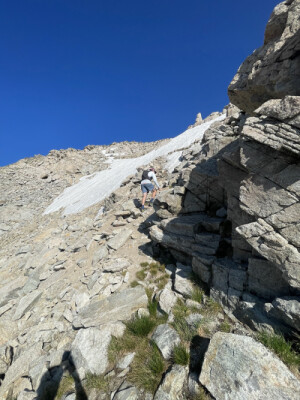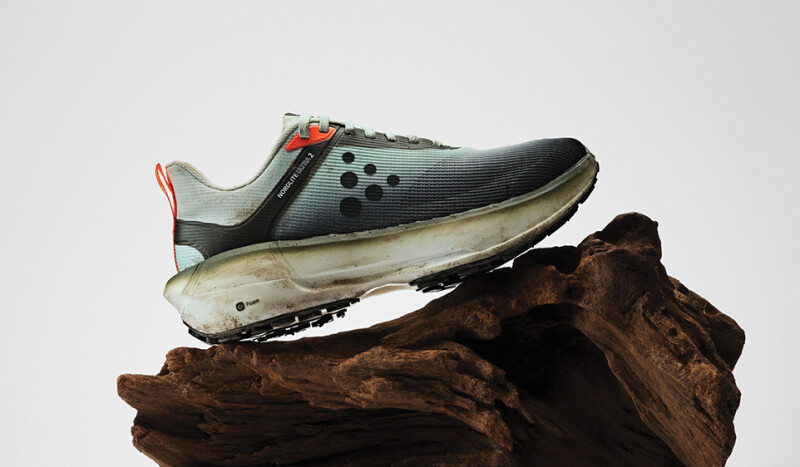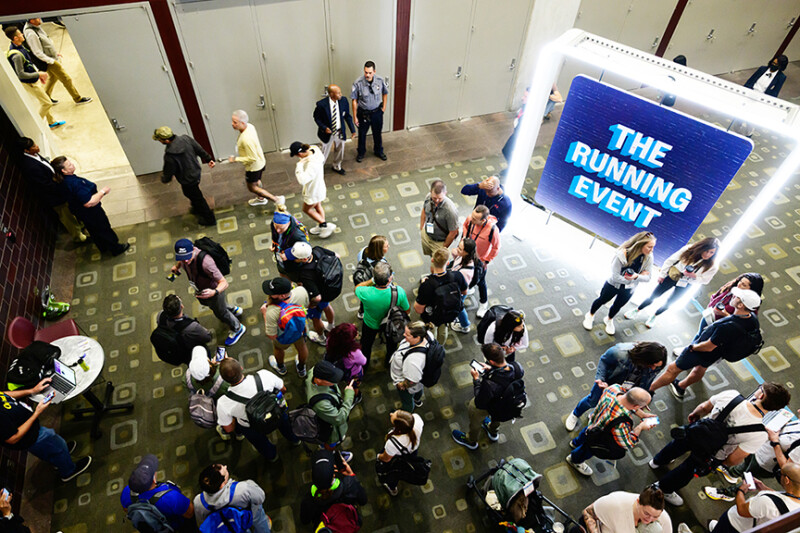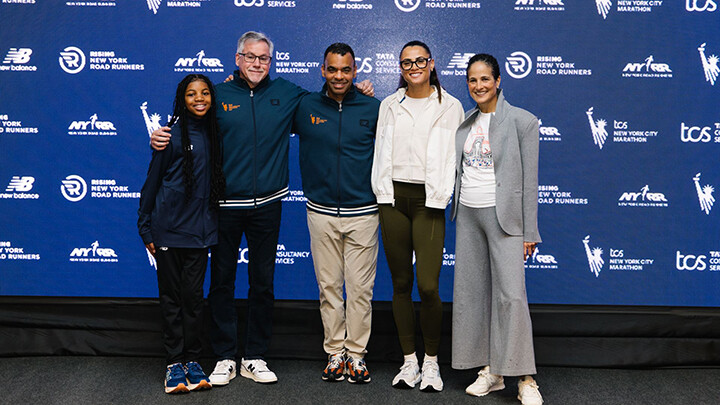It is vital that the trail running community – indeed, the entire outdoors community – take care of the environment. It’s where we run, hike, bike and walk. Here to help in that effort is Leave No Trace.
With the ambitious goal of making it easier for everyone to access and apply its principles and with an all-encompassing motto of “from the backcountry to the backyard,” Leave No Trace has evolved significantly over the past few years by expanding its educational content and introducing free online courses. Its programming and education content now covers a broader range of activities, including trail running, and it has developed a more diverse portfolio of partnerships.
The ”elevator pitch: Leave No Trace is a 501(c)(3) non-profit organization providing programs, education, training and outreach in all 50 states and more than 100 countries around the globe. Utilizing the power of science, Leave No Trace helps educate users on responsible recreation practices, from trail running in the backcountry to a picnic in your backyard.
And, according to corporate development manager Peter Murry, its new partnerships, many within the trail running community, have helped it reach new audiences and reinforce its commitment to protecting the outdoors in all its forms.
“Our educational efforts over the past year have reached over 360 million visitors through partnerships with 41 state, regional and city tourism organizations,” Murry points out, while its “Leave No Trash” campaign has engaged more than 10,000 people globally, resulting in the removal of five tons of trash from outdoor spaces.
Additionally, Leave No Trace conducted 357 educational programs across the U.S. and its “Training for All” initiative saw nearly 400,000 online lessons completed.
A key highlight from the past year is Leave No Trace’s new partnership with Hoka, which resulted in the launch this summer of an initiative supporting trail preservation and accessibility, contributing $75,000 to organizations, including Leave No Trace.
“Hoka’s involvement not only provides crucial funding, but also amplifies our educational reach,” explains Murry. “Through their platform promotion we’ve been able to engage a wider audience, promoting environmental stewardship and significantly increasing public awareness and participation in sustainable practices.”
Eco-efforts by events and brands are crucial to trail runners and have a measurable impact at retail, Murry stresses, and supporting sustainability initiatives aligns with the values of many trail runners who cherish and benefit from the outdoors. And there is no denying that the practical effect on sales is also significant.
The Retail Benefit
“Studies show that consumers are increasingly prioritizing environmental responsibility when making purchasing decisions,” he says, pointing to a recent survey by Nielsen that revealed that 81 percent of global respondents feel strongly that companies should help improve the environment.
In addition, trail runners who directly engage with nature are particularly responsive to brands demonstrating eco-friendly practices.
“Brands that actively participate in conservation efforts and partnerships with non-profits often see increased loyalty and advocacy from this community,” Murry says. “Events prioritizing sustainability can draw larger crowds and attract more sponsors, creating a positive feedback loop that benefits both the environment and the brand’s bottom line.
“In essence, committing to eco-efforts fulfills a moral obligation and serves as a powerful selling point, resonating deeply with consumers and driving sales.”
Leave No Trace stresses that run and outdoor specialty retailers can significantly champion sustainable recreation practices because they engage directly with recreators, both in-store and online. Integrating Leave No Trace education into these touchpoints – through in-store signage, social media content and website highlights – can make a substantial difference.
“A person trained in Leave No Trace is five times more likely to protect nature,” Murry points out. “We’ve collaborated with hundreds of organizations to develop and implement these strategies.”
Murry stresses that a retailer that encourages people to get outside and into sensitive ecosystems also has a responsibility to do so sustainably. Ultimately, these are areas everyone can enjoy and benefit from and losing access to them would hurt the industry’s collective well-being and business — which of course depends on people enjoying outdoor spaces.
“From a marketing standpoint, consumers are more focused than ever on who they are buying from and where their money is going,” he says. “It is no longer enough to simply produce or sell quality products. Brands and retailers must show their consumers they are investing time and money into protecting our outdoor areas. Brands that champion sustainability stand out from the congested crowd.”
And for running and outdoor brands, partnering with Leave No Trace offers an opportunity to elevate sustainability efforts and make a genuine impact on the outdoors. Each partnership is tailored to fit a brand’s specific needs, whether through staff engagements, custom content creation or comprehensive brand integration. By aligning with Leave No Trace, brands gain access to a well-recognized and respected name in sustainability, amplifying their own environmental story.
“We specialize in creating partnerships that deliver significant impact and even a simple collaboration, such as sharing our educational content on social media or website, can distinguish a brand and foster a lasting, positive influence on outdoor stewardship,” Murry says.
“The trail running community is vibrant and full of organizations making a difference and building relationships with these local and national entities requires effort, but can greatly enhance your brand’s presence and contribution to protecting the outdoor areas we all love.”
Leave No Trace’s goal into 2025 is to broaden its reach through research, new educational content and strategic partnerships. The group plans to continue to provide accessible educational resources and online trainings that cater to a wide range of communities and activities.
Looking Ahead
“Achieving this requires more than just cutting-edge research to guide our content — it requires innovative approaches to deliver this education effectively,” Murry explains. “Partnerships with organizations and brands are crucial for integrating Leave No Trace principles into diverse events and platforms.
“Financial support and brand platform leverage are essential to making these resources widely available,” he adds.
“With the help from brands, we can amplify our impact, ensuring that everyone getting outdoors knows how to do so sustainably.”
_________
Tips For Saving The Trails
Taking it a step further, Peter Murry encourages runners to follow the lead of Leave No Trace and he provides five helpful tips for the next time anyone hits the trail.
1. Know Before You Go. If you’re heading to a nearby park or trailhead, research the area before you head out to learn about the rules and regulations in the area. If you know that a trail tends to be busy, consider choosing a less popular trailhead or running in off-times to prevent overcrowding that can lead to trail widening and erosion.
2. Stick to Trails, Even When It’s Muddy. Run on durable surfaces such as trails, rocks and roads. Run through mud puddles or patches to prevent trail widening and avoid cutting switchbacks to prevent erosion that can lead to sedimentation and turbidity in local waterways.
3. Pack It In, Pack It Out. Be prepared to pack out any wrappers and trash from energy snacks or gels and use a reusable water bottle to minimize the impact of single-use items.
4. Be Respectful of Flora and Fauna. Running is an excellent time to check in with yourself and the natural world. See a beautiful flower or a cool-looking rock? Take a picture and leave it for others to enjoy as well. See an incredible animal? Make sure you’re viewing them from a safe distance to Respect Wildlife.
5. Be Kind and Communicate. Refer to the yield triangle to determine who has the right of way on the trail. It’s essential to foster an environment where everyone feels safe and respected. By following these guidelines, we can ensure that all runners enjoy their time on the trail to the fullest.






